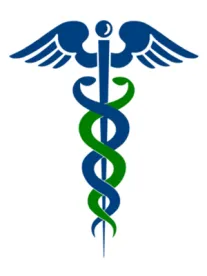As precision medicine gains momentum and in vitro diagnostics (IVDs) become increasingly used in clinical trials, pharma and biotech companies will need to develop expertise in evaluating IVD risk and, if working with IVD partners, to develop processes to ensure the partner is also properly considering risk and filing appropriate regulatory documents consistent with clinical trial timelines.
Key Takeaways
-
Be aware that the IVD you plan to use in your clinical trial may be considered a Significant Risk (SR) device and require an Investigational Device Exemption (IDE)
-
Make sure the clinical trial team is working closely with the IVD manufacturer to assess the risk status of the IVD as it is used in the clinical trial; understand the level of validation of the test, including any software used; and understand how it will affect the design and implementation of the trial
-
Incorporate the IVD review and possible IDE submission into the clinical trial timeline
-
Ensure the IVD manufacturer has the regulatory experience and data to support a successful IDE, if necessary, or assume responsibilities for the IDE submission
-
Prepare for early dialogue with the Institutional Review Board (IRB) reviewing the trial about the risk status of the test, how it potentially affects study subject safety, and appropriate informed consent discussion
-
Have systems and controls in place to reassess throughout the trial the risk status of the IVD
Summary of Guidance
On January 5, the US Food and Drug Administration (FDA) issued a new draft Guidance on Investigational IVDs Used in Clinical Investigations of Therapeutic Products. Based on concerns that drug clinical trial sponsors do not appreciate the need to follow device regulations when using “investigational” IVDs in clinical trials, the new guidance provides more structure around the incorporation of IVDs into clinical trials, and sets out FDA’s expectations about sponsors’ scope of review of the risk of use of such IVDs.1
The draft guidelines will need to be factored into how pharma clinical trial sponsors use IVDs in a clinical trial, study design, timeline for protocol development, Investigational New Drug (IND) submission, and study initiation.
What’s a Sponsor to Do?
The burden to properly assess the risk presented by the use of an IVD in a clinical trial is on the clinical trial sponsor and its IRB. Under the draft guidelines, FDA expects a Sponsor to
-
notify its IRB of the use of investigational IVDs in clinical trials, even if the IRB does not request information;
-
provide the IRB with a risk assessment of the IVD in the clinical trial;
-
obtain an IDE either through or with the IVD manufacturer if the IVD presents a significant risk as it is used in the clinical trial (see below section on Q submission meetings to obtain FDA advice on this determination);
-
continually assess the risk status of the IVD throughout the clinical trial, and if it changes from non-significant (NS) to significant, obtain an IDE; and
-
ensure the lab processing the IVD is compliant with Clinical Laboratory Improvement Amendments (CLIA).
Meeting with CDRH May Be Useful
FDA’s Center for Devices and Radiological Health (CDRH) will provide risk assessments for IVDs if requested, or meet with clinical trial sponsors to discuss the need for an IDE in “Q” submission meetings before starting the clinical trial to discuss questions about IVD risk, study design, and regulatory requirements.
Exchanging Data with the IND Manufacturer Will Be Necessary
Whether the IVD risk status is determined with or without specific FDA guidance, there will be a need for the drug and device manufacturer to exchange trade secret/confidential information. This can be accomplished between the parties through a non-disclosure agreement or, if there is a need to provide the information about the IVD to FDA, either as part of a meeting package or in a filing (IND or IDE), FDA recommends the use of Master Files and Letters of Authorization (LOAs) between the parties to give FDA access to reference and/or discuss relevant IVD materials.
What Is an Investigational IVD?
An IVD is considered an investigational device if it has not yet been cleared or approved by FDA for its intended use. FDA states that if a clinical trial will provide data about the safety or efficacy of an IVD, it is subject to the IDE requirements under 21 C.F.R. Part 812. These requirements will apply whether or not the IVD manufacturer intends to seek FDA clearance/approval for the IVD or commercialize the IVD.
How to Assess the Risk of an IVD
An IVD will be considered “significant risk” if the IVD is for a use of . . . “(3) substantial importance in diagnosing. . . or otherwise preventing impairment of human health and presents a potential for serious risk to health or safety or welfare of a subject” or “(4) otherwise presents a potential for serious risk to health, safety or welfare to a subject.” 21 C.F.R. 812.3 (m) (3)-(4). Thus, the risk status can be dependent on the clinical consequences of erroneous or inaccurate results under this criteria, or potentially on the sampling procedures used to obtain tissue for the IVD. An IVD could present a significant risk if it
-
produces incorrect test results that lead to misdiagnosis and/or mismanagement of a subject’s care;
-
produces a false positive for certain markers that could cause subjects to be exposed to toxic therapies without any benefit;
-
requires invasive or additional specimen sampling (biopsy or surgery) that may pose serious risk (note: additional blood draws do not increase risk);
-
produces test results that may lead to some subjects foregoing treatment known to be effective or delaying treatment in a way that they could irreversibly degrade their health condition;
-
produces test results that may expose subjects to safety risks/adverse events that exceed the risks of the control arm therapy or standard of care.
Note that as clinical evidence around a biomarker’s positive or negative relationship increases during a trial, a non-significant risk IVD may become a significant risk IVD, so increasing data must be monitored on an ongoing basis. Other clinical consequences that can affect the IVD risk assessment include
using it to include/exclude certain subjects;
-
using it to determine likelihood of experiencing Serious Adverse Events (SAEs);
-
determining dosing;
-
monitoring effect to adjust dose or other aspect of care; and
-
stratification or randomization of study subjects.
What Should Be in an IDE for a SR IVD?
An IDE should have a description of the IVD including
-
test participant technology;
-
equipment, reagents and supplies, calibration, and control materials;
-
procedures to conduct the test;
-
installation requirements and calibration parameters;
-
description of any analytes detectable by the IVD (e.g., SNPs, gene rearrangements, PCR primers and probe design);
-
all necessary instruments;
-
all software and the level of software validation available for the software;
-
type of specimens and collection technologies;
-
intended use of the IVD, e.g., analyte to be detected and how it relates to the investigational therapy; whether the IVD produces a quantitative or qualitative result;
-
disease/condition, population, frequency of test, intent to treat vs. (not to treat) population;
-
description of cut-off values (i.e., clinical decision points);
-
test performance and analytical validity;
-
preclinical or clinical information on the IVD performance;
-
clinical study design; and
-
benefit-risk assessment: why the benefits to the study subjects outweigh their exposure to the IVD from invasive sampling to potential erroneous results.
Review Process for IDEs
-
If the IDE is adequate for review, FDA will review it within 30 days from receipt of IDE and notify the Sponsor by letter
-
FDA can approve an IDE with conditions, which would allow the Sponsor to proceed to enroll subjects while it responds to FDA’s conditions within 45 days
-
If resolution of any issue needs to occur before subject enrollment, the IDE will be disapproved and the study cannot be initiated
[1] FDA does not address in these draft guidelines the use in clinical trials of laboratory developed tests (LDTs), i.e., IVDs developed and used solely within one laboratory. If an LDT is being used in a clinical trial, the trial sponsor should have evidence to support the LDT status. See guidance documents here and here.




 />i
/>i

